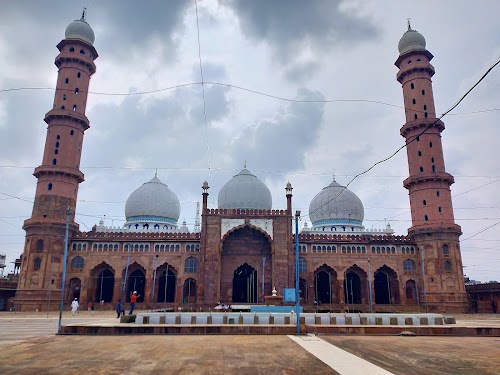
Jama Masjid
Bhopal, India
- Admire the Mughal architectural style.
- Experience the peaceful atmosphere.
- Explore the intricate carvings and inscriptions.
- Learn about the Begums of Bhopal.
- Take photos of the majestic minarets.
Known for:
Description:
Jama Masjid in Bhopal is a stunning example of Islamic architecture, known for its grandeur and intricate details. The mosque features towering minarets, spacious courtyards, and a magnificent prayer hall. Its red sandstone facade is adorned with delicate carvings and inscriptions. The peaceful atmosphere and architectural beauty make it a must-visit for tourists seeking cultural and historical experiences. Visitors can explore the mosque's various sections, admire the craftsmanship, and learn about its significance in Bhopal's history. Remember to dress modestly when visiting this religious site. The surrounding area also offers a glimpse into the local life of Bhopal.
History:
Construction of the Jama Masjid began during the reign of Qudsia Begum in 1832 and was completed by her daughter, Shah Jahan Begum, in 1857. The mosque was envisioned as a grand symbol of Islamic faith and Mughal architectural style. The Begums of Bhopal were known for their contributions to the city's infrastructure and religious institutions, and the Jama Masjid stands as a testament to their patronage of the arts and architecture. The mosque has served as a central place of worship for the Muslim community in Bhopal for over a century and continues to be an important religious and cultural landmark.